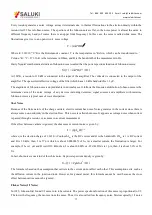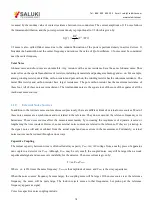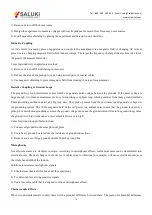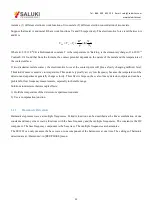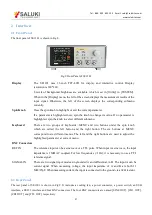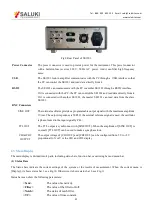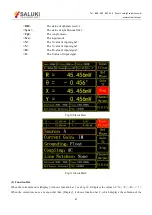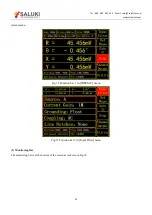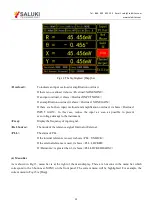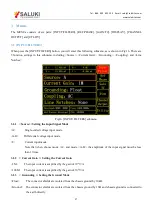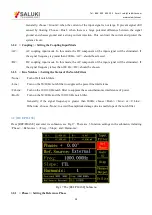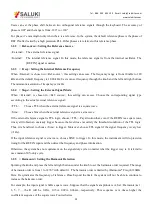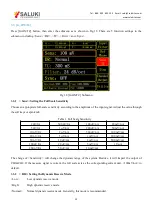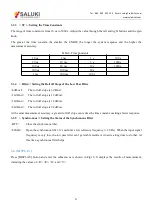
Tel: 886. 909 602 109 Email: sales@salukitec.com
www.salukitec.com
16
1.9 Input Connections
Noises always exist in all circuits. Even if the signal is not very weak, noises exist and decrease the accuracy of
measurement. There are many methods to reduce noise. Minimizing the various noise sources can increase the accuracy of
the measurement. Besides, the effect of noise sources in the laboratory and the problem of the differential grounds
between the detector and the lock-in can be minimized by careful input connection.
There are two basic methods for input connection - the single-ended connection is more convenient while the differential
connection eliminates spurious pick-up more effectively.
Single-Ended Connection (A)
In the first method, the lock-in uses the A input in a single-ended mode. The lock-in detects the signal as the voltage
between the center and outer conductors of the A input only. However, there are two disadvantages of this mode.
Generally, the low level is a constant of 0V. However, grounds of different instruments may be at different potentials.
When the shield of the A cable is connected to the lock-in's ground directly, different potentials will result in a high
current, that is the ground loop. Thus, connecting via a resistor between them can avoid ground loop problems. In general,
float uses 10 k
Ω
and ground uses 10
Ω
.
Besides, this mode is not sensitive to noise. The signal cable is just like an antenna. The lock-in lets the shield ‘quasi-float'
in order to sense the experiment ground and pick up the activities of the electronic in environment. In this case, the noise
came up. Unfortunately, the single-ended connection mode cannot distinguish the noise and actual signal.
Differential Connection (A-B)
The second method of connection is the differential mode. This mode has two signals cables which connect the signal
source and the lock-in's inputs. There are two high impedance power amplifiers in the lock-in. The lock-in measures the
voltage difference between the center conductors of the A and B inputs, which can avoid common voltage problems since
the shields are ignored.
In this mode, take care that the two cables travel the same path between the experiment and the lock-in. There should not
be a large loop area enclosed by the two cables. Otherwise, measurement is susceptible to magnetic pickup.
1.10 Intrinsic Noise Sources
Noise is defined as any negative factors which will affect the result of measurement. Noise is random, unpredictable and
temporary. Good experimental design should reduce the noise and improve the stability and accuracy of measurement.
There are various intrinsic noise sources which are present in all electronic signals. Some of them are unavoidable which
only can be decreased by signal averaging and a narrower bandwidth. Others can be decreased by filtering and perfect line
structures and component layout. Meanwhile, amplifier itself also produces noise at work, which can be solved by low
noise amplifier design techniques.
Johnson Noise
















